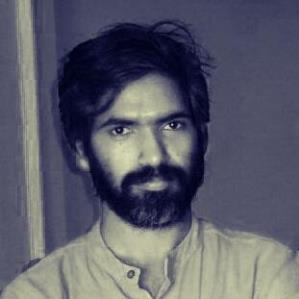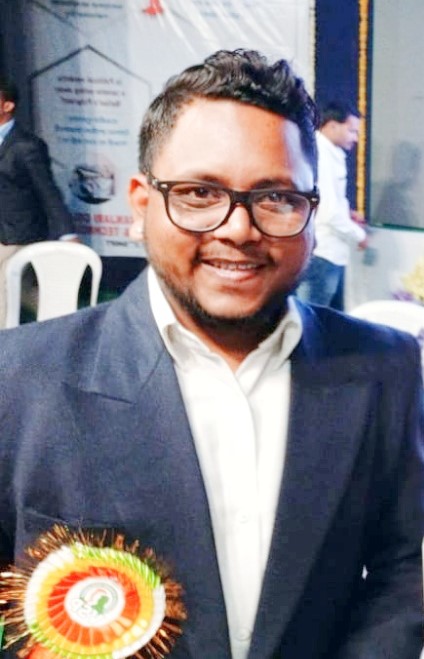Dhamma Darshan Nigam
 “I am convinced that the real remedy is inter-marriage. Fusion of blood can alone create the feeling of being kith and kin, and unless this feeling of kinship, of being kindred, becomes paramount, the separatist feeling—the feeling of being aliens—created by Caste will not vanish. Among the Hindus, inter-marriage must necessarily be a factor of greater force in social life than it need be in the life of the non-Hindus. Where society is already well-knit by other ties, marriage is an ordinary incident of life. But where society is cut asunder, marriage as a binding force becomes a matter of urgent necessity. The real remedy for breaking Caste is intermarriage. Nothing else will serve as the solvent of Caste.” Dr Ambedkar
“I am convinced that the real remedy is inter-marriage. Fusion of blood can alone create the feeling of being kith and kin, and unless this feeling of kinship, of being kindred, becomes paramount, the separatist feeling—the feeling of being aliens—created by Caste will not vanish. Among the Hindus, inter-marriage must necessarily be a factor of greater force in social life than it need be in the life of the non-Hindus. Where society is already well-knit by other ties, marriage is an ordinary incident of life. But where society is cut asunder, marriage as a binding force becomes a matter of urgent necessity. The real remedy for breaking Caste is intermarriage. Nothing else will serve as the solvent of Caste.” Dr Ambedkar
This statement of Babasaheb Ambedkar is often quoted whenever there is a discussion about inter-caste marriage. But it seems like the discussion on inter-caste marriage has just stopped at this statement and the issue of marriage. Nothing is discussed about what else Babasaheb said, other than this statement on inter-caste marriage, about the cultural life that is lived further between two married individuals from different caste backgrounds. Inter-caste marriage by itself is an indicator of weakening of caste, but shouldn’t cultural practices followed between those two individuals also be another indicator?
In his text “Castes in India: Their mechanism, genesis and development,” Babasaheb found endogamy (marriage within their own caste) to be the essence of caste, a key to the mastery of the caste system and the only characteristic that is peculiar to caste. While in “Caste is India” Babasaheb deals with the emergence, maintenance, and continuance of the caste, in “The Annihilation of Caste” (AoC) Babasaheb provided solutions for its annihilation. In AoC, Babasaheb said that “the real method of breaking up the Caste System was not to bring about inter-caste dinners and inter-caste marriages but to destroy the religious notions on which Caste was founded.”
More than just inter-caste marriages, Babasaheb emphasized the need to “destroy the religious notions on which Caste was founded,” and he further said that “To agitate for and to organise inter-caste dinners and inter-caste marriages is like forced feeding brought about by artificial means. Make every man and woman free from the thraldom of the Shastras, cleanse their minds of the pernicious notions founded on the Shastras, and he or she will inter-dine and inter-marry, without your telling him or her to do so.” He said “How do you expect to succeed, if you allow the Shastras to continue to mould the beliefs and opinions of the people?”
Matrimonial ads in today’s time are the result of the same belief in the shastras. Such ads are further perpetuating endogamy. Moreover, considering the prevalent notions of ‘purity of caste’ and ‘purity of blood,’ inter-caste marriages for girls are even possible in “privileged” and/or dominating castes, as they bring “big caste name” and respect to their families. Meanwhile, girls marrying into underprivileged castes are almost prohibited as that brings insult to their families and their caste name. Honour killings are carried out in order to escape from the same insult socially, and to keep ‘purity of caste’ and ‘purity of blood’ intact.
In such inter-caste marriages, religious notions and belief in shastras can be observed in different religious-cultural practices that are followed during marriage and within married life, as can be seen through the following examples:
- Assume that if two persons from different castes marry each other, but with the same Hindu rituals, and with the same belief of a relationship of 7 lives and 7 phera.
- Assume that if in an inter-caste marriage, a woman had to keep fasts for the long life of her husband (karwa chauth), and that she never saw such rituals in her maternal home.
- Assume that if in an inter-caste marriage, a woman compromises with her job, career, and further stopped from studying further, and in the name of family accept to live as a housewife.
- Assume that if in an inter-caste marriage, a woman stops eating meat because of her vegetarian husband and his family, and she says that it was her “choice”.
- Assume that if in an inter-caste marriage, a woman stops celebrating all the cultural practices that she used to celebrate at her maternal home, stops using her father’s surname, and just after marriage adds her husband’s surname in her name and accepts all the cultural practices that her husband and his family follow.
- Assume that if children from an inter-caste marriage get their father’s surname and learn all the culture of their father’s home and nothing from their mother’s side.
Janaki Abraham (2014) notes that while some traces of tolerance over different periods of time over marriages out of endogamy rules can be observed, ‘status quo’, ‘privilege’, ‘power’, ‘caste pride’ and ‘male privilege’ are maintained. Radhika Govinda (2013) notes that male dominance is perpetuated by controlling women’s sexuality which further restricts women from marrying a person of her choice. In such a context it is the husband’s caste identity that gets continued and strengthened, and only women have to compromise, adjust and accept the culture of their husband even if it was dominating or discriminatory at societal level, and forget the culture which she learnt at her maternal home for twenty to thirty years which might be humanitarian or anti-caste. Except for a few exceptions only women have to do away with their religious culture. Therefore, rather than just focusing on inter-caste marriages it is really important to see how caste works between two individuals.
Kumudin Das (et al. 2010) notes that the number of inter-caste/religion marriages increases with increase in economic and educational status. Moreover, it is really important for the newlywed couple with modern education to be very conscious about the casteist and patriarchal nature of society. Otherwise, it is very much possible that uneasy and unhealthy religious and cultural practices might enter their modern world very easily and in a very sophisticated manner and the couple might not even get to know about it. In this situation, the social change that Babasaheb imagined through inter-caste marriages is quite hard to achieve.
Inter-caste marriages, if not opposed are not encouraged open heartedly either. Therefore, in addition to inter-caste marriages, change in attitude and behaviour of people would come through putting conscious efforts. Although the route to weakening of caste passes through modern and scientific education, without loosening of patriarchy, caste would surely intrude into the lives of educated people. And if the religious and cultural practices prevalent in Hindu religion continue, such inter-caste marriages would hardly serve as the solvent of caste.
Considering the continuance of practices and beliefs of Hindu religion in inter-caste marriages, there is a need to add few more solutions that Babashaeb provided for deconstruction of caste system. In addition to inter-caste marriages, married couples should also swear to follow the “22 vows” of Babasaheb and then the clutches of caste may start loosening from the Indian psyche.
~~~
References
Abraham, Janaki (2014). Contingent Caste Endogamy and Patriarchy: Lessons for Our Understanding of Caste. Economic and Political Weekly. Volume XLIX NO 2
Das, Kumudin (et al. 2010). Dynamics of inter-religious and inter-caste marriages in India. Available at http://paa2010.princeton.edu/papers/100801
Govinda, Radhika (2013). ‘First our fields, now our women’: Gender politics in Delhi’s urban villages in transition. South Asian Multidisciplinary Academic Journal, 8 (2013).
~~~
Dhamma Darshan Nigam is an activist and a writer. He can be contacted at: ddnigam@gmail.com









